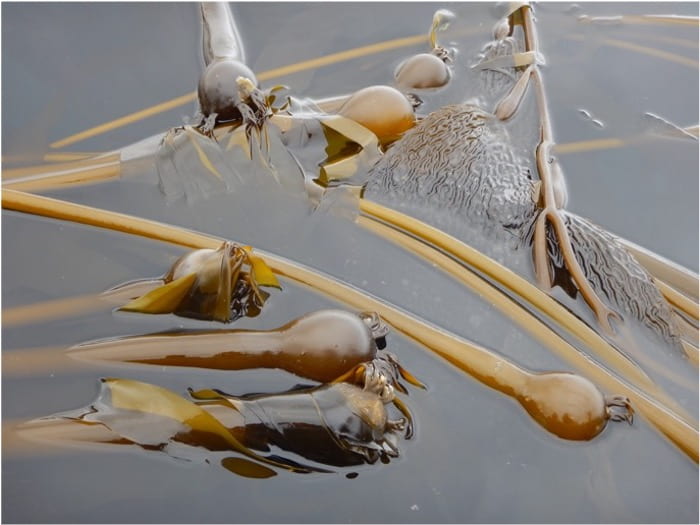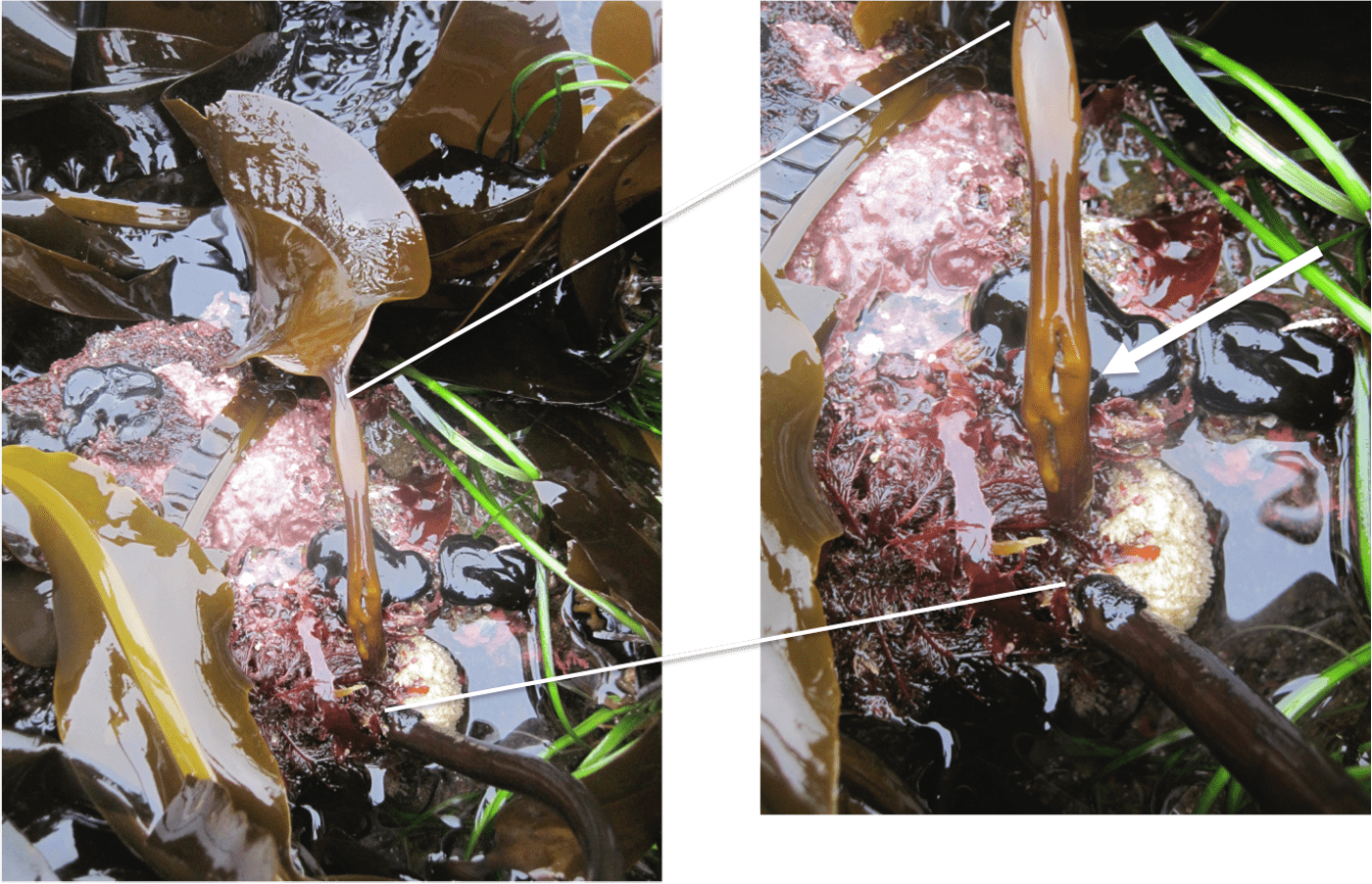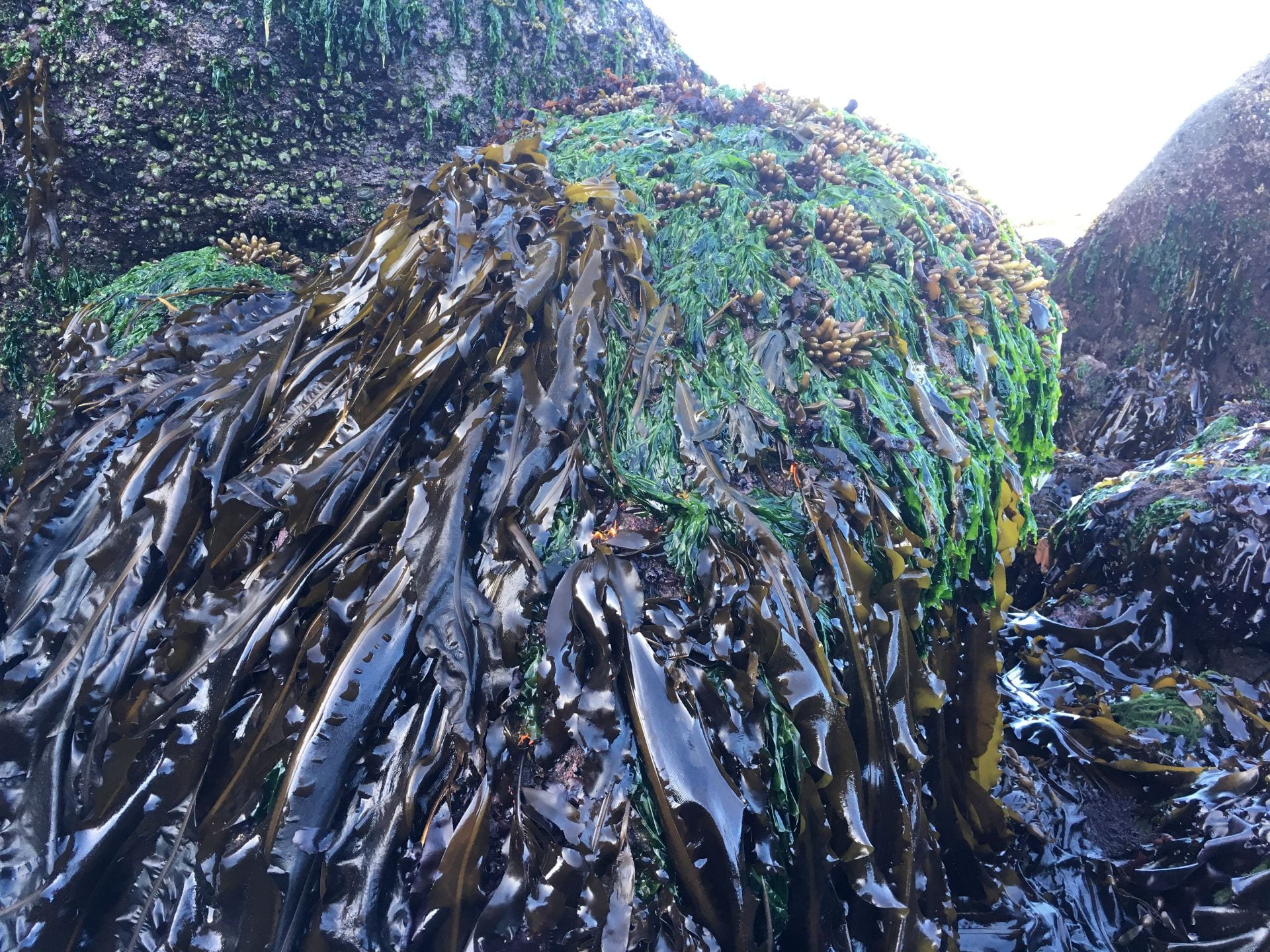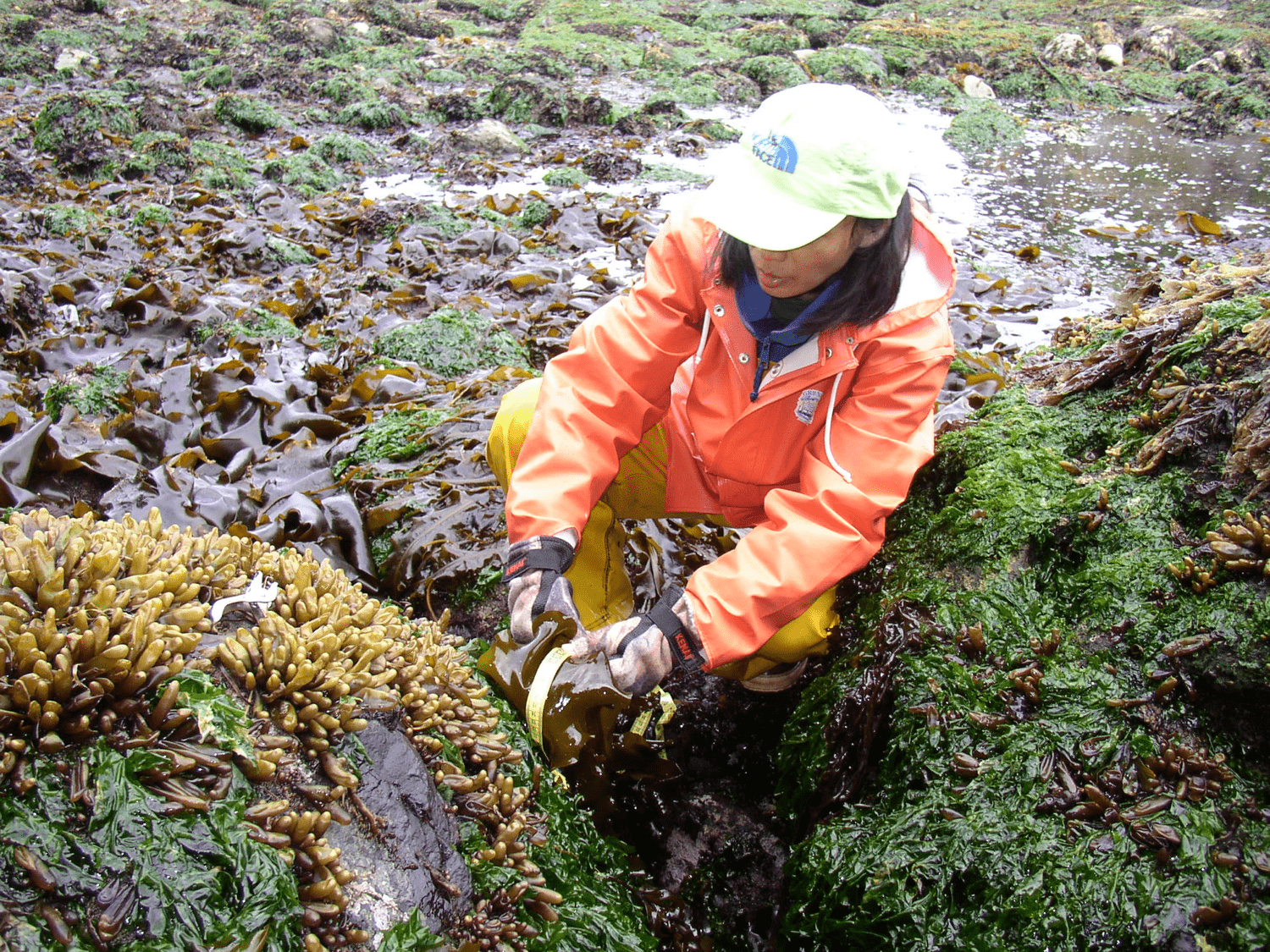Extinction Risk
Both genetic and demographic factors have been shown to effect extinction risk, though the relative contribution of each is uncertain. In collaboration with Tim Wootton we tested how both genetic and demographic factors affect the persistence of the sea palm, Postelsia palmaeformis via field experiments. We used microsatellite markers to understand dispersal distances and mating system in the sea palm, as well as the fate of populations with differing genetic backgrounds. We found that extinction risk in Postelsia is better explained by population size rather than the degree of inbreeding (Wootton & Pfister 2013, Ecology). Our work demonstrates the importance of interpreting genetic versus demographic effects in nature (Wootton & Pfister 2015, PNAS) Read about the study at this Nature blog.
A related interest is the mating systems of kelp and their implications. We have tested whether there are barriers to selfing or costs associated with selfing in the sea palm Postelsia. The sea palm shows few costs of selfing and selfs at a rate that is greater than expected, suggesting that selfing is used as a means of reproductive assurance and persistence in this short-lived kelp. This work was in collaboration with an undergraduate in my lab, Allison Barner (now a faculty member at Colby College!) and published in Proc of the Royal Society B (Barner, Pfister, Wootton 2011).
This research was funded by the National Science Foundation, OCE #01-17801.
Kelp and a changing climate
Primary producers in the ocean will respond to both changes in the chemical and physical properties of seawater as well as the grazers that consume them. Generally, kelp respond positively to colder water with higher nitrogen content, conditions associated with negative values for the Pacific Decadal Oscillation and positive values of the North Pacific Gyre Oscillation. Our studies with the giant kelp Macrocystis and the bull kelp Nereocystis in Washington state confirm this ( Pfister_et_al_2017 Journal of Ecology, & Supplemental Materials).


In contrast to canopy kelp, long-term studies with the kelp Pleurophycus gardneri reveal opposite patterns with climate indices. Instead, their burrowing amphipod grazers are positively related to negative values for the Pacific Decadal Oscillation and positive values of the North Pacific Gyre Oscillation. The deleterious effects of amphipods means that Pleurophycus has a relationship to large-scale climate indices over a 26-year span that is opposite than expected and cautions that the fate of some primary producers will be determined through their trophic relationships. See Pfister & Betcher 2018 Journal of Phycology (pdf).
Stochastic demography
I am generally interested in how organisms, through the structure of their life cycle, ameliorate variability in population growth rate. This has been a long-standing theme in my own research, where I have documented the pattern that population growth is least sensitive to stages of a life cycle that are highly variable (Pfister 1998). I am interested in comparisons among species in life histories in order to ask if there are generalities in how species will respond to environmental variation and climate change. Kelp have been the focus of much of the empirical work related to these questions. A previous working group on this topic of ‘stochastic demography’ was sponsored by the National Center for Ecological Analysis and Synthesis (NCEAS) at Santa Barbara and several comparisons among taxa have resulted (Doak et al. 2005, Morris et al. 2008).
A challenge for population models is that variation in performance is ubiquitous among individuals in nature and can be focused on particular life histories stages of different taxa. I have found that variability among individuals affects the size structure of populations, their extinction risk, and the quantitative tools we use to describe populations. I use both models and data to show how variation that is not distributed independently among individuals (autocorrelation exists) is important to quantitative descriptors of populations. Mei Wang (at right) in the Statistics Dept has collaborated with me on this and we have developed a simple matrix projection model to describe this phenomenon in kelp and other species (Pfister and Wang 2005).


